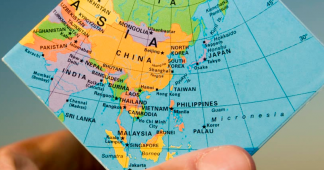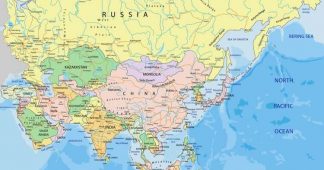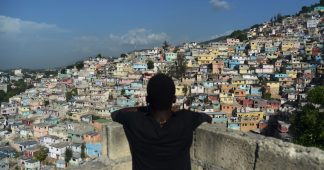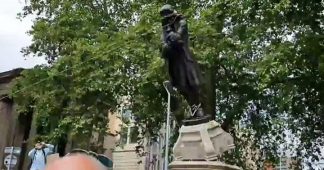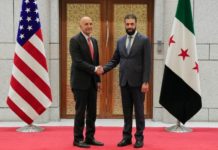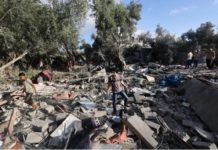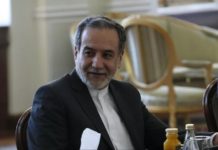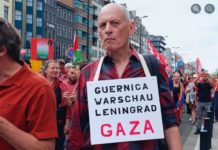By Darwis Khudori *
Monday, July 20, 2020, I received an Internet link from one of my Algerian students: « La stèle dédiée au Président Soekarno témoigne des relations algéro-indonésiennes » (The stele dedicated to President Soekarno bears witness of Algero-Indonesian relations). The stele was inaugurated on Saturday, July 18, 2020, in Ben Aknoun, a quarter of Algiers, the capital city of Algeria, by a diplomatic representative of Indonesia (H.E. Ambassador Madam Safira Machrusah) and the director general of Asia-Oceania of the Algerian Ministry of Foreign Affairs (Mister Boumediene Guenad). See http://www.aps.dz/algerie/107578-algerie-indonesie-la-stele-dediee-au-president-soekarno-a-alger-temoigne-des-relations-historiques-entre-les-deux-pays (checked on 29/07/2020).
Meanwhile, in the West, especially in former colonialist-imperialist countries, homes to colonialist conquerors as well as slave merchants and owners (USA, UK, France, the Netherlands, Belgium, Australia…), social protests and collective movements against racism, imperialism, colonialism and slavery have been growing unexpectedly. Some movements in different countries went further to destroy or remove statues of historical figures symbolising the Western conquest and domination of the world, statues representing racism, imperialism, colonialism and slavery, statues characterising public spaces in Western cities, such as Christopher Columbus (Western first comer in America) in USA, Jan Pieterszoon Coen (Dutch pioneer in colonising Indonesia) in the Netherlands, Edward Colston (slave trader) in UK, King Lepolod II (master coloniser of Congo) in Belgium, Captain James Cook (Western first comer in Australia) in Australia, Jean-Baptiste Colbert (initiator of Black Code) in France…
So, why did Algeria install a stele representing a historical figure that is not of its own people?
Racism, colonialism, slavery, Black Lives Matter
Racism and slavery existed in diverse traditional societies. But it is the Western Galaxy of capitalism, colonialism and imperialism that used them systematically as a tool of economic exploitation for the benefit of the mainland (Western Europe: Spain, Portugal, France, Netherlands, UK…). Racism was practiced to affirm the superiority of Western (white-skin) people over the colonised one (black or coloured-skin), to dispossess the colonised people and/or the slaves from their own personality, to divide them into small entities, to control and to exploit them easily. Following the Western conquest of America and the genocide of its indigenous people, the Western Galaxy developed slavery and used slaves from Africa to exploit natural resources of America. After the abolition of slavery, the Western Galaxy used “coolies” (contract labourers) from Asia, mainly from China, then migrant workers from India and Indonesia, in their diverse colonies in America, Hawaii, the Caribbean… but also in East Africa and Malay Peninsula (British colonies), in Indonesia and Surinam (Dutch colony), in New Caledonia (French colony) etc. Their conditions were not so different from slaves. In Latin America, the Spanish colonialism created caste system and developed racist nomenclature such as “mulatto”, “mestizo”, “zambo”… In Indonesia, the Dutch classified the colonised people into first class (the Dutch, European, White), second class (the Easterners: Arab, Chinese, Indian) and third class (the “Inlanders”: local, autochthonous, indigenous people). In Algeria, the colonial law of 1865 allowed Arab and Berber Algerians to apply for French citizenship only if they abandoned their Muslim identity. In different colonised countries, racial segregation was applied in schools, urban zones, public transport, professional fields, etc.
Racism and slavery was applied in synergy with other tools of colonialism, which were territorial control, peopling and imposition of cultural, economic and political model to targeted people. All Western colonialism passed by military conquest. From the Spanish conquistador Pizzaro in Peru in 16th century to the French torturer Aussaresses in Algeria in mid-20th century, it was about military control over a territory. There were negotiations sometime, between local or national representatives of power and Western agencies, but behind the negotiations there was the determinant factor of Western military supremacy. Once the territory was under control, the Western colonialists sent people from the mainland to occupy the territory, by force when necessary, including evicting or killing the local or indigenous inhabitants. This might be done in different scales: small scale (settlement of colonial administrative or residential zones in an existing structure like the British in India and the Dutch in Indonesia), larger scale (foundation of new towns like the French in Algeria, the Dutch and the British in South Africa, America, Australia), largest scale (replacing the whole inhabitants of a country, a region or a continent by people from the mainland involving the genocide of indigenous people like the Spanish in Central and South America, the British in North America and in Australia).
The territorial control and the peopling achieved their full effects through the change of the way of thinking of the targeted people from their original one to a new one suitable for exploitation. In the name of “mission civilisatrice” (French jargon) or “White’s Skin Burden” (British jargon), fuelled by a conviction of the superiority of their way of life, Western colonialist-imperialist powers imposed to the colonised people their cultural model (education, language, religion, social relations, dress, architecture, gastronomy…), economic model (monetary system, cultural crop for export, extraction of raw materials, maintaining cheap labours…) and political model (governance, administration, political parties…). It is in this way that Africa was divided into multiple Nations-States, grouped into English Speaking and French Speaking, and that African people and slaves were called with Western names: David, Françoise, George, Jacqueline, Joseph, Robert, Rosalie… The cruel open killing of a black-skin people (George Floyd) by a white-skin policeman (Derek Chauvin) in Minneapolis, USA, on the last May 25, is a part this historical-structural-systemic racism maintained by the oligarchy of finance and white-skin supremacy.
However, societies are changing. Outside the elites, the conscience on justice, peace, no-war, no-arm, no-nuclear, equality, solidarity, friendship, ecology, climate change, gender, LGBT, common good and all globally shared values is growing among the people, especially young generation born and brought up in the era of globalisation and social media inspired by Che Guevara, Martin Luther King, Thomas Sankara, The Beatles, Bob Marley, Bob Dylan, Joan Baez, Malala Yousafzai, Greta Thunberg… and many other humanist-ecologist-universalist public figures. For this generation, the racist killing, which was an impunity-chronic act in USA, is no more acceptable. Social movements led by Black Lives Matter gather massively not only black-skin people, but also white-skin and other coloured-skin people, as well as different ethnic and religious groups. They demand for justice, for the end of racism, colonialism and slavery, for the reparation of the victims of racism, colonialism, and slavery… They do not accept anymore that the symbols of Western conquest, colonialism, imperialism, and slavery decorate their public spaces.
Gandhi in Ghana
The refusal of statue of a historical figure did not happen only on white-skin figures symbolising Western superiority in Western countries, but also on non-white-skin figures in non-Western countries. The example is the statue of Mahatma Gandhi in Ghana, which seems to be a unique example of the case in the world in my knowledge. The story goes back to 2016 when the President of India visited the University of Ghana with a gift: the statue of Mahatma Gandhi. The university accepted the visit and the gift, especially due to the fact that the project had already been discussed and agreed with the Ministry of Foreign Affairs and the Office of the President of Ghana. The University Vice-Chancellor himself (at that time Professor Ernest Aryeetey) had learned about Gandhi and was aware of the controversy of his statue at the university courtyard. Gandhi was 23 years old when he went to South Africa and lived there for many years as a young lawyer. Gandhi referred to blacks as “kaffirs” in some of his early writings. He could be easily understood as very racist in his campaign to gain more rights for the Indians in South Africa. He showed very little interest in the affliction of the black-skin people and believed that the black-skin people’s fight was different from that of Indians. By the time, his personality changed. He joined hands with some black groups to resist white oppression. When he left South Africa and returned to India, and came face to face with the Indian caste system, he saw it as being as dehumanising as what Indians and black people went through in South Africa. He found the poor Indians to be not any better off than the Indians in South Africa. Starting from the 1930s, when he gave the British Empire so many headaches, he was very different from the young lawyer who had arrived in South Africa a few years after leaving the UK. Gandhi was celebrated for the things he taught the world in his later years, through his writings, ideas and lifestyle. He was celebrated for seeking peace for all the peoples of the world. In his writings about self-government and independence, he emphasised peaceful coexistence with all races. He spent time teaching people how to resist oppression in a peaceful way. It is this pursuit of peaceful coexistence of the races that caught the world’s respect and attention. This is what attracted Martin Luther King to his ideas. It is this same ideal that he shared with Nelson Mandela. Indeed, this is what inspired Ghana’s own Kwame Nkrumah to speak about what he learned from Gandhi. For those reasons, the University Vice-Chancellor defended the statue of Gandhi installed at a university courtyard. Two years later, when the University Vice-Chancellor who defended the statue has completed his term, under the pressures of students and staffs, the university decided to remove the statue (Ernest Aryeetey, “The background story to a statue of Gandhi and the University of Ghana”, The Conversation, 14 May 2019, https://theconversation.com/the-background-story-to-a-statue-of-gandhi-and-the-university-of-ghana-117103 checked on 28/07/2020).
Soekarno in Algeria
The relationship between Algeria and Indonesia was characterised by brotherhood and solidarity, especially during the period of struggle of Asian and African people against colonialism and for independence, period known as “Bandung Era” between 1955 and 1970. While the Moroccan traveller Ibn Battuta had visited Indonesia in 14th century AD, the relationship between Indonesia and North Africa in modern time took place after the WWII. Based on my research at the French Diplomatic Archives, the UN announcement of the independence of Indonesia on December 27, 1949, was received with joy and celebrated by Muslim societies in the Arab world. On the same day, King Farouk of Egypt delivered his congratulations to the Indonesian diplomatic representative in Cairo. At the following day, the government of Egypt recognised officially the independence of Indonesia. Prime Minister of Egypt, Azzam Pasha, said in his speech that “The Victory of Indonesia is the Victory of the Arab World of Middle East” and was “a promising sign for the independence of the Arab nations of North Africa”, in this case Morocco, Algeria, Tunisia and Libya. In Morocco, the first Friday following the historical announcement, December 31, 1949, the independence of Indonesia was celebrated in mosques with prayers and recitation of the Koranic chapter of Victory. Moreover, since the last three months Moroccan newspapers published at their first page everyday news on the heroic struggle of Indonesian people for their independence and a call for Moroccan people to follow the Indonesian example.
A few months later, leaders of movements for independence of Morocco, Tunisia and Algeria came one after another to meet Indonesian leaders for moral and material supports from Indonesia. Among the most important of them was Habib Bourguiba who became later the first president of Tunisia. He started to visit Indonesia in early 1951 and to meet President Soekarno, Vice-President Hatta, Minister of Foreign Affairs Rum, and other political leaders of Indonesia. The sympathy of Soekarno to the independence movements in North Africa was such that he provided premises in Jakarta for the office of Neo-Destour, Bourguiba’s political party, as the basis of their movements in Asia. From Algeria, the first delegate of independence movement visiting Indonesia was Said Fahri who presented in 1953 the most recent situation of uprising in Algeria, the gratitude towards Indonesian government and the request for Indonesian support. When the independence war broke in Algeria in November 1954, Algeria occupied the headlines at Indonesian newspapers thanks to information spread by Neo-Destour office in Jakarta. A month later, came to Indonesia two delegates of Algerian independence movement, Hussein Ait Ahmad and Mohammed Yazid, to attend the Bogor Conference (preparatory conference of Asian-African Conference in Bogor, near Jakarta) at the end of December 1954, where they submitted a memorandum on the situation in Algeria. With the support of Indonesian government and a basis in Jakarta, leaders of North African independence movements travelled to different countries of Asia for their campaign in favour of North African independence from French colonialism. Their target was to convince the government of different countries of Asia in order to include the North African questions in the agenda of the Asian-African Conference to be held in Bandung in 1955. This made French government angry and the tension of France-Indonesia relations rising. The period between the 1954 Bogor Conference and the 1955 Bandung Conference was marked by high tension of international politic between Indonesia and Western Bloc (especially France, UK, USA). During the Bandung Conference, the North African leaders of independence movements were allowed to attend the conference as “visitors“. The result was promising: the Final Communiqué of the Bandung Conference mentioned the North African questions in two articles: 1) Some colonial powers have denied to their dependent people’s basic rights in the sphere of education and culture, which hampers the development of their personality and also prevents cultural intercourse with other Asian and African peoples. This is particularly true in the case of Tunisia, Algeria and Morocco, where the basic right of the people to study their own language and culture has been suppressed; 2) In view of the unsettled situation in North Africa and of the persisting denial to the peoples of North Africa of their right to self-determination, the Asian-African Conference declared its support of the rights of the people of Algeria, Morocco and Tunisia to self-determination and independence and urged the French Government to bring about a peaceful settlement of the issue without delay (The 1955 Bandung Asian-African Conference, Final Communiqué).
Thanks to the Bandung Conference, Morocco and Tunisia gained their independence in 1956. Meanwhile, Algeria still had to struggle in bloody war against France until its independence in 1962. Between the 1955 Bandung Conference and the 1962 Algerian independence, Indonesia under Soekarno supported continuously by diplomatic means the Algerian struggle for independence. Following the Bandung Conference, an Asian-African Commission was created in the UN framework in order to take care of Asian-African questions in the UN assemblies, including the independence of Algeria and other African countries. Thanks to this process, around 30 African countries gained their independence between 1955 and 1965. In 1956, Indonesia facilitated the establishment in Jakarta of a “Mission Sémi-Diplomatique et d’Information” of the FLN (the Algerian main Front of National Liberation) under the direction of Mohammed Yazid. In 1960, the film Djamilah Aldjazairiyah (Djamilah the Algerian) — made by the Egyptian filmmaker Yousef Chahine showing the heroic actions of Djamilah during the independence war in Algeria — was screened in Jakarta with the presence of Magda, the Egyptian actress playing the role of Djamilah. Personally, Soekarno denounced ceaselessly colonialism and imperialism in his speeches, especially at international meetings. He went to meet French President De Gaulle in Paris several times to talk about Algerian independence and other international issues, including the necessity of UN reform. The most well known contribution of Soekarno to the end of colonialism and imperialism was his speech at the 1960 UN General Assembly titled “To Build the World Anew”. In this speech, Soekarno demanded the independence of Algeria and all African countries still under colonialism. This speech was a kind of preliminary introduction to the 1961 Belgrade Conference of Non-Aligned Nations under the leadership of Nehru (India), Soekarno (Indonesia), Nasser (Egypt), Tito (Yugoslavia) and Nkrumah (Ghana). In this conference, Algeria was invited as participant just like other independent countries despite the fact that Algeria was still under colonial occupation. Algeria was represented by Prime Minister Ben Youssef Ben Khedda of GPRA (Gouvernement provisoire de la République d‘Algérie). During the Belgrade Conference, several participating countries including Indonesia recognised the Algerian independence. The following year, 1962, France ceded its sovereignty to Algeria.
After Algerian independence, Algeria-Indonesia relations went stronger. Thanks to Soekarno’s support, Algeria was chosen to be the host of the Second Asian-African Conference (Second Bandung) projected to be held in Algiers in June 1965. The military coup d’état by Boumedienne replacing Ben Bella at the head of Algeria just before the conference did not disturb the relations. Indonesian government recognised rapidly the new government of Algeria. Due to the regime change and other reasons, the Second Asian-African Conference was postponed to November 1965. However, two months before the conference, a bloody political event occurred in Indonesia! On the night of September 30 and October 1, seven high rank Indonesian military officers were kidnapped and assassinated, the Indonesian Communist Party was accused to be the author, the Army under General Soeharto took over the power, Soekarno was put into a house arrest until his death in 1970. The Second Asian-African Conference was cancelled and has never been reorganised till today!
The heroic struggle of Algerian people and the disinterested support of Soekarno for Algerian independence have been taught in Algerian schools. According to my Algerian student, during their primary and secondary schools, Algerian pupils learn about national liberation and anticolonialist movements and their leaders in developing countries, including Nehru, Nasser, Che Guevara, Mandela… and especially Soekarno recognised as a central figure in supporting Algerian independence and revolution. A beautiful tribute to Soekarno was pronounced by Algerian President Bouteflika for his centenary in 2001. Let us quote some of his words: “Charismatic leader, man of revolutionary verb, liberator and unifier of Indonesia, President Soekarno has striven, along his life, tirelessly, for the ideal of justice and peace, for the promotion of universal values to which he was fundamentally attached. Indonesia must be proud to have counted among her children a man of stature as President Soekarno who was a model and an example for our generation. I keep of this great militant, committed very early to the struggle for liberation of the Third World, the deepest memory filled with emotion and admiration. Up to day, I remain impressed by his open-mindedness, his sense of humour and his large knowledge of foreign languages, which allowed him to have an extraordinary capacity of communication. He enjoyed therefore an extraordinary charisma, enhanced by the elegance of his dress and his conduct, which made many of his contemporary fellows envious” (Abdelaziz Bouteflika, President of the Republic of Algeria, Tribute to President Soekarno, Embassy of Algeria in Jakarta, 2002). In this way, Soekarno was appropriated as a part of Algerian historical figures appreciated by both decision makers and public.
This may be the answer to the question asked at the beginning of this essay. In the same principle, the statue of Gandhi was not accepted because he was not appreciated unanimously by the Ghanaian decision makers and public as a part of their historical figures. The same of Christopher Columbus in USA, Jan Pieterzoon Coen in the Netherlands, Leopold II in Belgium, Edward Colston in UK, James Cook in Australia, Colbert in France. The cosmopolitan-multicultural-mueltiethnic-multireligious-globalised-ecologist young generation in the countries where those statues were installed do not appreciate the figures represented by those statues as a part of their historical figures.
Hungary
In dealing with the unwanted statues, it may be worthwhile to learn from Hungary. During the communist era in Hungary (1946-1989), Budapest was a home to a great number of statues of communist figures including Marx, Engels, Lenin, Stalin, Communist Workers, Soldiers, Youth, etc. They decorated Budapest streets and squares. When the Hungarian communist regime fell (1989), the destiny of these statues became uncertain. Some statues had been destroyed by the crowd, that of Stalin, for example. Interestingly, the Budapest city council took care seriously of the issue. Instead of accommodating one section of public opinion that suggested the total destruction of the statues, the city council decided to create a thematic statue park of documentary value. A committee consisting of all the district mayors and local cultural committees was in charge of preparing the project. A list of 42 statues was put together, which provided the basis for the architectural proposal of the Statue Park. The design of the park was put into a public competition. The winner was architect Akos Eleod. The park was built in the suburb of Budapest, known as “Memento Park” and inaugurated on June 27, 1993, which corresponds to the second anniversary of the end of the Soviet Red Army’s occupation of Hungary. Since the opening, it has become one of the most popular cultural tourist destinations in Budapest for both Hungarian and foreign tourists.
I had a chance to visit the park in June 2016. Personally, I found it fantastic, brilliant, poetic and instructive! It gave me a very deep feeling of nostalgia, admiration, sympathy, regret, and sorrow towards the historical epoch represented by the statues. It haunted me with a question: how come the construction of an ideal humanity — in this case communism — ended up in a tragedy? END (Paris, 31/07/2020)
* Indonesian architect and historian, director of Master’s Degree in Exchanges with Asia at the University Le Havre Normandy, France
